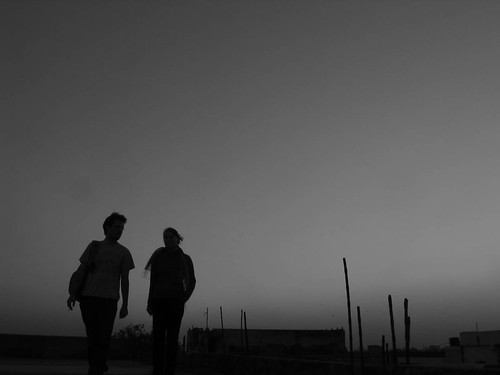Last weekend I went to Humayun's tomb. Beautiful buildings and spectacular gardens which made a nice change of pace from the stress of Delhi. Humayun was a Mughal emperor, meaning he was Muslim - most of Delhi's great architecture is Muslim in origin, and many other famous Indian buildings, such as the Taj Mahal, also share this heritage. You can see my photos of the tomb, as well as of the gardens and smaller tombs around it, here.
In this type of architecture, symmetry seems incredibly important. For instance Humayun's tomb itself is a square building, identical on each side. You'll get the same view from the North, South, East or West. It is surrounded by gardens divided up by canals and paths into 8 parts, which are further subdivided into four parts by smaller canals and paths.
You'll also rarely see paintings or sculpture in or around these buildings, as representations of the natural world, and people especially, are not permitted in stricter interpretations of Islam. Instead, you'll see extremely intricate patterns, in tiling, painting, brickwork and so on.
The gardens surrounding this and other Mughal tombs are supposed to represent the Muslim idea of paradise. The word paradise actually comes from the Persian word for 'walled garden'.
Humayun's tomb was built after his death by his widow. Also seems a shame for such a beautiful building and gardens to be built for someone after he can no longer enjoy them!
Subscribe to:
Post Comments (Atom)

1 comment:
Did elephants help build the Taj Mahal?
Post a Comment